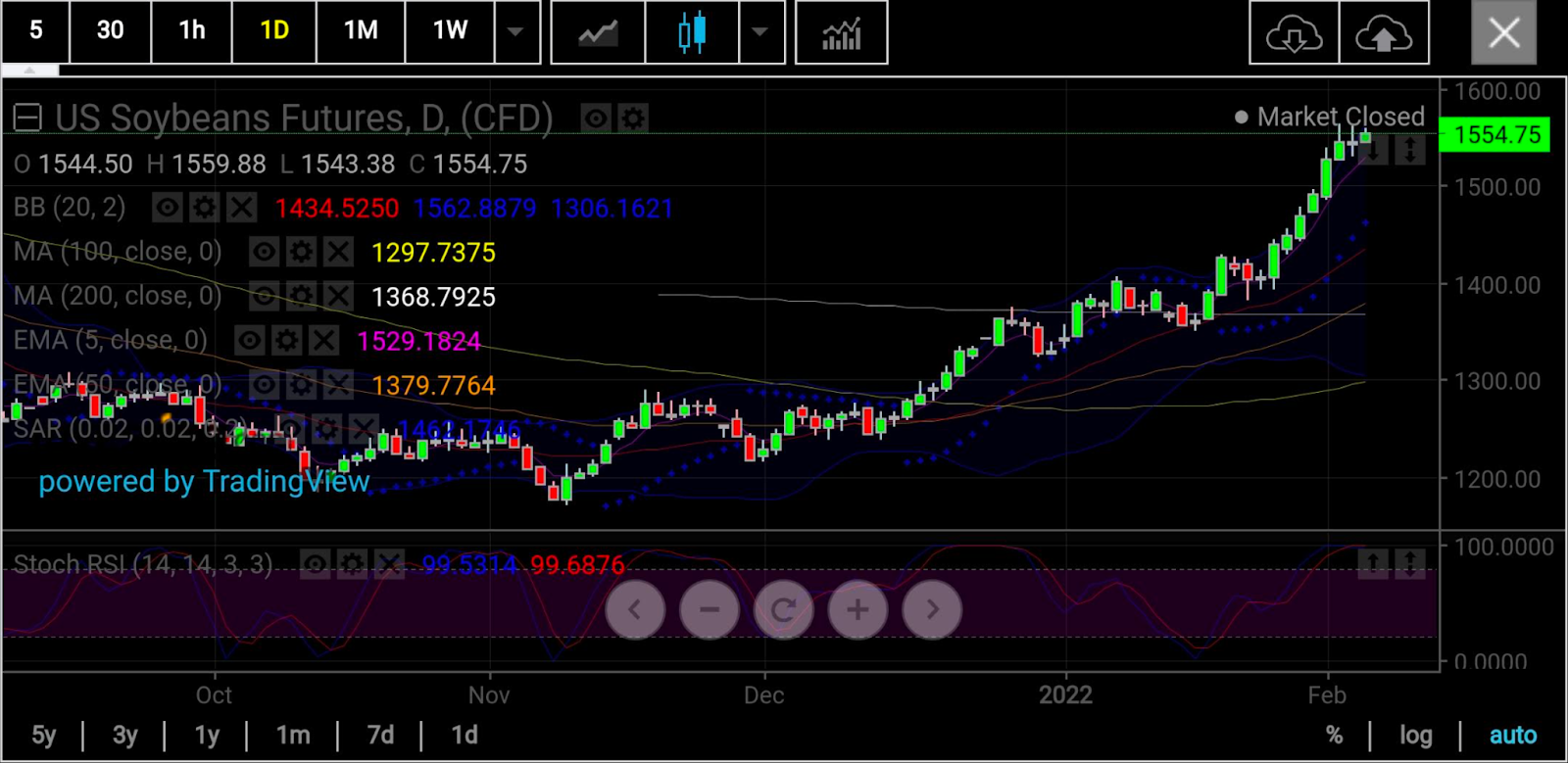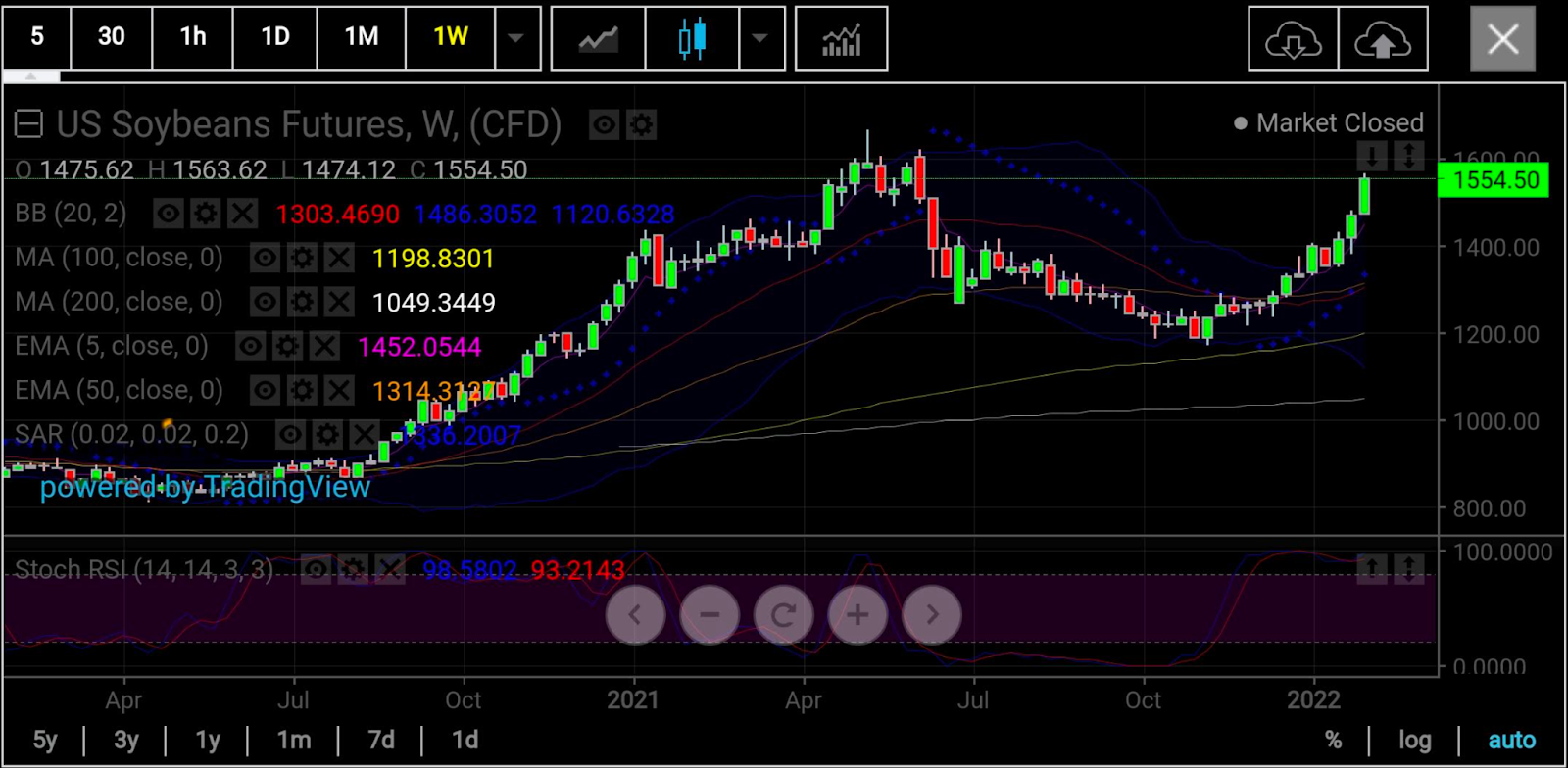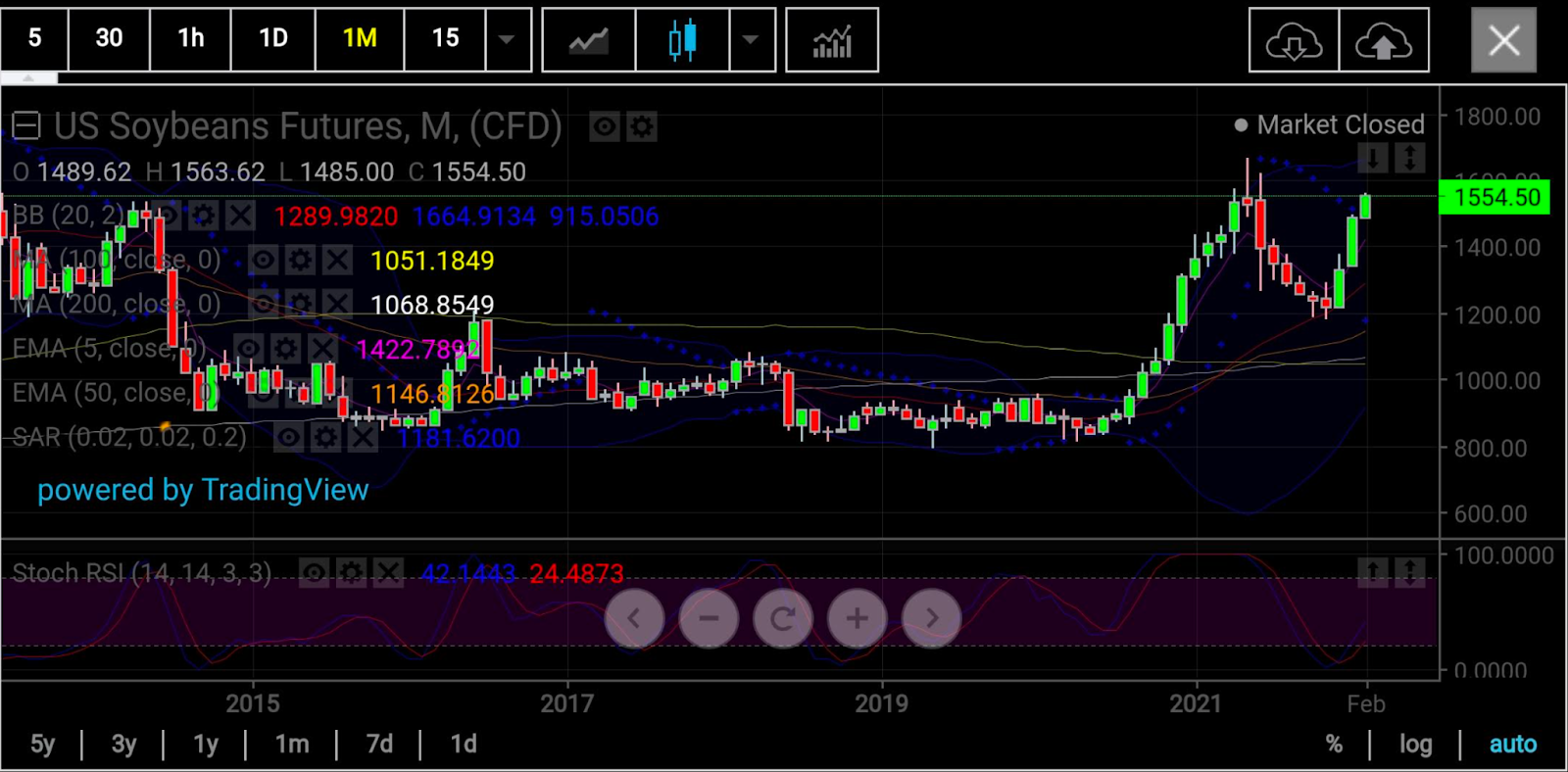Soybeans have rallied in 12 of the past 16 weeks, reaching levels last seen in June, and fundamentals and charts suggest a push next to $16 a bushel amid surging inflation in the United States.
With US crude oil hitting $90 a barrel on Thursday for the first time since 2014, soy is another commodity complex fitting into the price pressure jigsaw that’s bewildering a Federal Reserve trying to bring inflation, at a 40-year high, under control.
Since 2022 began, soybeans—a raw material for a variety of foods, animal feed and even building materials, lubricants and household items—have rallied more than 17%.
Soymeal, the animal feed derived from soybeans, is also up 17% on the year.
Soyoil, another byproduct, has risen 7%. It is also up on demand for biodiesel, which has been tracking prices of both US crude and ultra-low sulfur diesel, which have gained 21% and 22%, respectively.
Cumulatively, the soy complex is the best performing commodity subset outside of energy and metals.

In Thursday’s session on the Chicago Board of Trade, the front-month soy contract for March settled at $15.56 per bushel, its highest since June. Soybeans last traded at above $16 also in June.
“Once we went through $15 per bushel, and looking at the charts, we are open to $16,” Bryan Strommen, a trader at Progressive Ag in Fargo, North Dakota, told Grainews, a trade journal on the industry, on Tuesday.
Soybeans and its variants rallied with few stops between June 2020 and April last year from production outages forced by the coronavirus pandemic. The latest run-up is, however, largely due to inclement weather which has severely impacted this year’s crop in Brazil—the world’s largest soy grower.

“The past three weeks have definitely seen an acceleration in the advance as markets have tried to adjust to the reality of lower production in South America, and it would appear that we may have moved into the blowoff stage in an effort to stymie demand,” the Hueber Report, a grains markets consultancy, said in a commentary published Wednesday.
Jack Scoville, chief crop analyst at Chicago’s Price Futures Group, held a similarly bullish view.
He said:
“The data released by the state ag services in Brazil implies total Brazil production at 125 million tons to 127 million tons, according to at least some analysts here in the US. Production ideas at the beginning of the crop season were closer to 150 million tons for Brazil so the cuts are drastic and imply much more demand for US Soybeans down the road.”
Scoville said Argentina, another major soy grower in South America, was experiencing very hot and dry conditions that weren’t exactly helpful for the crop.
Soybean shipments out of the United States have, meanwhile, been blistering hot, data from the US Department of Agriculture (USDA) showed. US soybean export sales for the week to Jan. 27 came in at 1,977,400 tonnes for both old and new crop years combined—a range outside of trade expectations.
Weekly sales of old-crop US soymeal, a feed ingredient, totaled 605,500 tonnes, a marketing year high that also topped trade expectations.

Chart-wise, soybeans were also well positioned for a strike at $16, said Sunil Kumar Dixit, chief technical strategist at skcharting.com. He added:
“The previous $12 gave soybeans a solid ground for a launch at the $16.67 top hit in June. Now, we're just some 100 points away from the goalpost. If the three white soldiers on the weekly chart continue marching ahead, soybeans will soon match $16.67.”
Dixit, however, cautioned that a retest of $16.67 would likely be followed by momentum distribution—or setback—that could lead to a 10%-15% correction, pushing soybeans toward the $15-$14 horizontal support areas.
He said:
“Once prices correct to the $14 level, which would be a 50% Fibonacci level retracement measured from $11.70 to $16.67, soybeans can embark on the bullish streak again.”
“The overbought daily stochastic reading of 99/99 calls for an imminent correction whilst the weekly chart’s stochastic reading of 98/93 reassures yet another stride toward $16.67. In the mid-term, the monthly chart’s stochastic reading of 42/24 is overtly bullish for revisiting the $17.88 top of September 2012.”
Disclaimer: Barani Krishnan uses a range of views outside his own to bring diversity to his analysis of any market. For neutrality, he sometimes presents contrarian views and market variables. He does not hold a position in the commodities and securities he writes about.
